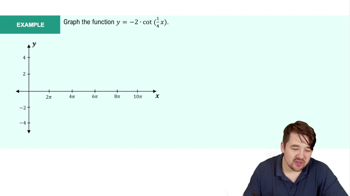Here are the essential concepts you must grasp in order to answer the question correctly.
Vertical Asymptotes
Vertical asymptotes occur in the graph of a function where the function approaches infinity or negative infinity as the input approaches a certain value. In this case, the function f has vertical asymptotes at x=1 and x=2, indicating that as x approaches these values, f(x) does not settle at a finite limit but instead diverges.
Recommended video:
Introduction to Cotangent Graph Example 1
Limits
A limit describes the behavior of a function as the input approaches a particular value. In the context of vertical asymptotes, the limit of f(x) as x approaches 1 or 2 will help determine whether f(x) approaches positive or negative infinity, which is crucial for understanding the function's behavior near these points.
Recommended video:
One-Sided Limits
One-sided limits are used to analyze the behavior of a function as it approaches a specific point from one side only, either the left or the right. For the limits as x approaches 1, it is important to evaluate both the left-hand limit (as x approaches 1 from values less than 1) and the right-hand limit (as x approaches 1 from values greater than 1) to fully understand the function's behavior at the asymptote.
Recommended video:
 Verified step by step guidance
Verified step by step guidance Verified video answer for a similar problem:
Verified video answer for a similar problem:



 5:21m
5:21m